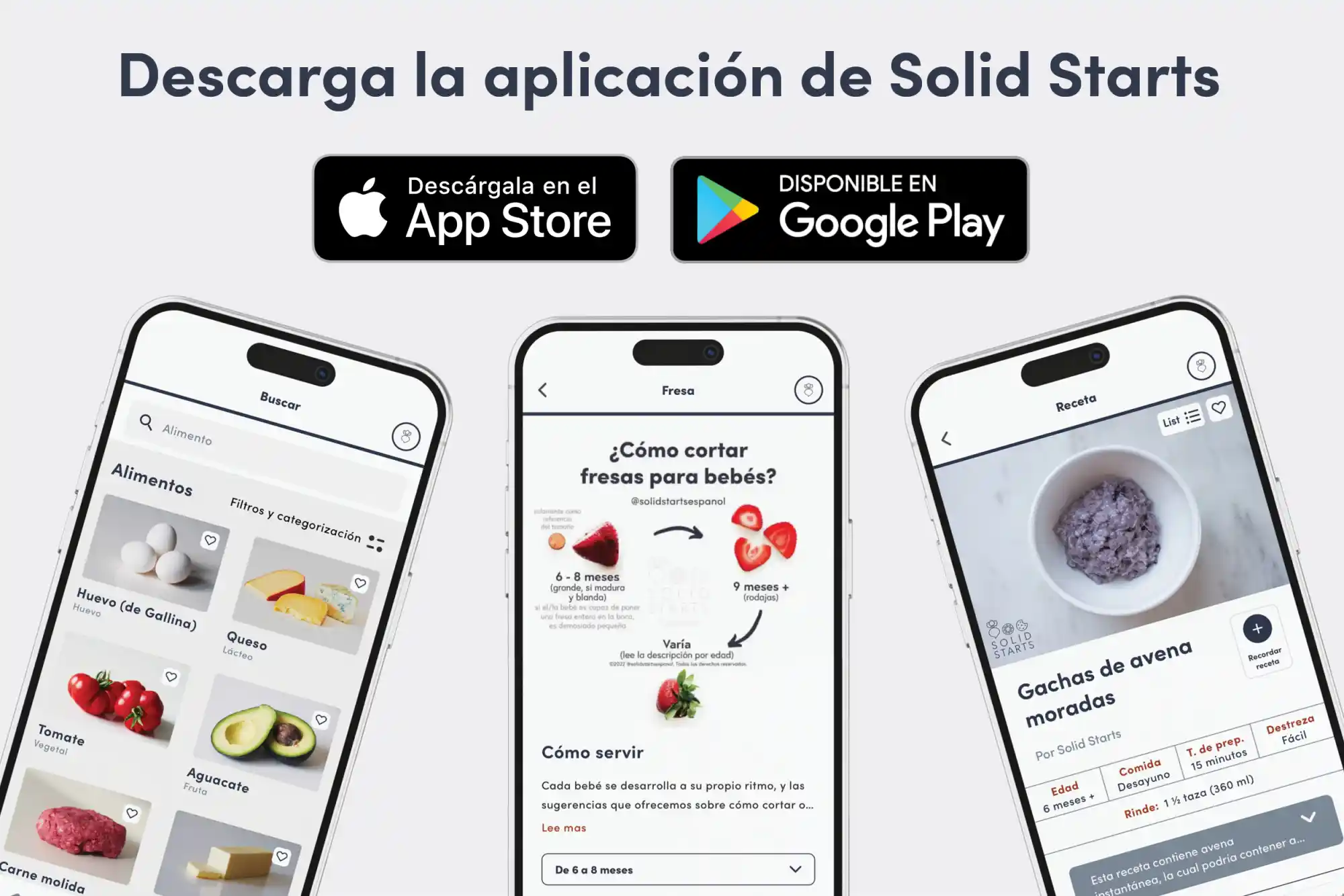Acceda a la base de datos First Foods® en Solid Starts App.
Leer másFonio
Grano
Sugerencia de edades
6 meses
Alto contenido de hierro
Sí
Alérgeno común
No

When can babies have fonio?
¡Lo sentimos, esta página aún no está disponible en español! Estamos trabajando tan rápido como podemos para traducir todo nuestro contenido, gracias por tu paciencia y apoyo.
Fonio may be introduced as soon as baby is ready to start solids, which is generally around 6 months of age.
Fonio, also known as acha, are the tiny seeds of savannah grasses from West Africa, where most of the world’s supply is produced. Across the region, fonio is a common first food for babies and a vital nutrient source for individuals who are nursing or pregnant. Fonio was previously shunned by European colonizers, who demanded that African farmers grow crops with global commercial appeal, such as cotton, peanuts, and sugar. Fonio persevered thanks to its drought resistance and the efforts of rural communities, who continued to cultivate the staple food.
How do you serve fonio to babies?
Cada bebé se desarrolla a su propio ritmo, y las sugerencias que ofrecemos sobre cómo cortar o preparar determinados alimentos son generalizaciones para una amplia audiencia.
6 months old +:
Mix cooked fonio into a soft, scoopable food like mashed vegetables, stewed greens, or yogurt to help bind the tiny grains together and minimize the mess. Alternatively, use fonio to make warm porridges or use cooked fonio as a binder in dosa, fritters, meatballs, pancakes, or patties.
9 months old +:
Serve cooked fonio on its own or incorporate cooked fonio into finger foods such as dosa, fritters, idli, meatballs, or pancakes, and break the food into bite-sized pieces before serving. When serving fonio on its own, flattening the grains with the back of a fork can help the rice stick together and make it easier for babies to self-feed. You can also continue offering fonio porridge and fonio mixed into soft, scoopable foods as well.
12 months old +:
Serve cooked fonio alongside savory sauces, stews, and stir-fries. If you press the fonio with the back of a fork, it sticks together a bit and can be easier for the child to self-feed. If you like, serve the fonio alongside an age-appropriate utensil to encourage practice. If the child is not interested in using a utensil, don’t worry: using utensils can be exhausting for new eaters, and many children toggle back and forth between feeding themselves with their fingers and utensils. Consistent and accurate utensil use will come in due time, typically sometime after 24 months of age.
¡Lo sentimos, esta página aún no está disponible en español! Estamos trabajando tan rápido como podemos para traducir todo nuestro contenido, gracias por tu paciencia y apoyo.
Videos
Is fonio a choking hazard for babies?
No. Cooked fonio presents a low risk when safely prepared for a child’s age and developmental ability, though, in theory, an individual could choke on any food. To reduce the risk, prepare and serve fonio in an age-appropriate way as described in the How to Serve section. Note that loose grains of fonio are more likely to scatter in the mouth, which can cause gagging or coughing. If baby is struggling to manage the food, consider mashing the grains with the back of a fork or adding ingredients like broth, coconut milk, or sauce to help the grains stick together. As always, make sure you create a safe eating environment and stay within an arm’s reach of baby during meals.
Learn the signs of choking and gagging and more about choking first aid in our free guides, Infant Rescue and Toddler Rescue.
Is fonio a common allergen?
No, fonio, which is a form of millet, is not a common allergen. Allergies to millet are rare, but can be severe. Individuals who are allergic to rice may also be sensitive to millets such as fonio. In some cases, individuals with wheat or corn allergies may be sensitive to fonio and other millets as well; however, more research is needed. Fortunately, since fonio and other millets are gluten-free, they are appropriate for individuals with celiac disease and non-celiac gluten sensitivity to consume.
As you would when introducing any new food, start by offering a small quantity for the first few servings. If there is no adverse reaction, gradually increase the serving size over future meals.
Is fonio healthy for babies?
Yes. Fonio is a versatile gluten-free grain that offers carbohydrates, fiber, and protein, in addition to calcium, iron, magnesium, B vitamins, and zinc. It also is rich in antioxidants and polyphenols to help with bodily repair. Together, these nutrients provide energy to fuel baby’s play and exploration, as well as support digestion, growth, and development. They also support bone density, red blood cells, metabolic processes, taste perception, and more.
¿Qué utensilios necesito para empezar?
¡Ninguno! Sirve los alimentos sólidos directamente en la bandeja, plato o tazón del/a bebé y luego deja que el/la bebé explore con las manos. Si lo deseas, tenga una cuchara o un tenedor disponibles para ayudarlo/a a familiarizarse con los utensilios, pero no se espera que adquiera las habilidades para usarlos hasta que sea un poco mayor.
¿Es necesario tener una trona/silla alta?
Si bien una silla alta puede ayudar a crear un entorno seguro para comer, existen formas alternativas para que el/la bebé coma de forma segura, así como sostenerlo/a en tu regazo o sentarse juntos en el suelo. Para obtener más información, consulta nuestra Guía detallada de sillas altas para bebés.
Nuestro equipo
Escrito por
Consejos de expertos directo a tu bandeja de entrada
¡Suscríbete y recibe correos semanales con recetas, consejos y más!
Copyright © 2025 • Solid Starts Inc






